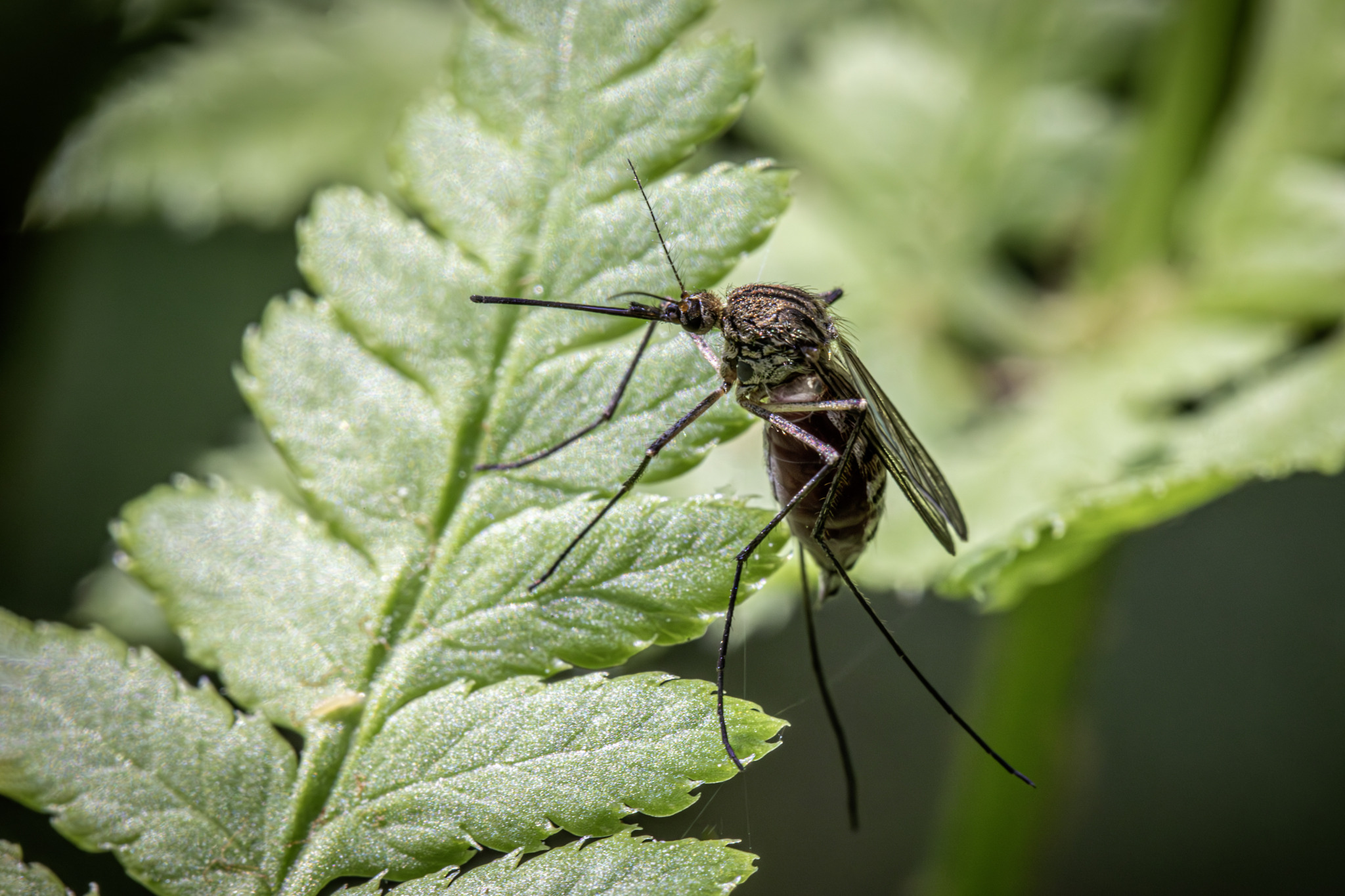The Inland Floodwater Mosquito, scientifically known as Aedes vexans, is a widespread species of mosquito found in many parts of the world. Here are some key features and characteristics of this mosquito:
Appearance
- Size: Aedes vexans is a medium-sized mosquito, typically around 4 to 7 millimeters in length.
- Color: The mosquito has a dark brown to black body with white bands on its legs and a distinctive pattern of white scales on its thorax and abdomen.
Habitat
- Preferred Habitats: This species is commonly found in temporary water bodies such as floodplains, marshes, and pools formed by rainwater. They prefer areas that experience periodic flooding.
- Geographic Range: Aedes vexans has a wide distribution and is found across North America, Europe, Africa, and parts of Asia and Australia. It is highly adaptable to various climates and environments.
Behavior
- Feeding: Adult females are known for their aggressive biting behavior, feeding on the blood of mammals, including humans. They are most active during the evening and night but can also bite during the day in shaded areas. Males feed on nectar and other plant juices.
- Breeding: Aedes vexans lay their eggs on moist soil or vegetation that will be flooded. The eggs can remain dormant for extended periods until they are submerged by floodwaters, which then triggers hatching.
- Life Cycle: The life cycle includes egg, larval, pupal, and adult stages. The time from egg to adult can be relatively short, often just over a week under favorable conditions.
Public Health Importance
- Disease Transmission: While Aedes vexans is not the primary vector for many of the most notorious mosquito-borne diseases, it can transmit various pathogens, including viruses causing diseases such as West Nile virus and heartworm in animals. Its role in disease transmission varies by region.
- Nuisance Factor: Due to their aggressive biting and large populations during certain times of the year, Aedes vexans can be a significant nuisance to humans and animals, impacting outdoor activities and livestock health.
Control and Prevention
- Mosquito Control Programs: Effective control measures for Aedes vexans include environmental management to reduce standing water, application of larvicides to breeding sites, and adult mosquito control through insecticides.
- Personal Protection: Individuals can protect themselves from bites by using insect repellent, wearing long sleeves and pants, and using mosquito nets or screens to keep mosquitoes out of living spaces.
Interesting Facts
- Floodwater Adaptation: The ability of Aedes vexans to lay eggs that can withstand dry conditions and hatch upon flooding is a remarkable adaptation that allows them to thrive in transient water habitats.
- Distribution and Abundance: The species’ wide distribution and ability to exploit temporary water sources make it one of the most abundant mosquito species in many regions.
In summary, the Inland Floodwater Mosquito (Aedes vexans) is a widely distributed and adaptable mosquito species known for its aggressive biting behavior and ability to breed in temporary water bodies. While not the primary vector for many major diseases, it can still pose health risks and be a significant nuisance. Control and prevention efforts focus on reducing breeding habitats and protecting individuals from bites.
Visited 197 times, 22 visit(s) today
Views: 374
Subscribe to the newsletter:
